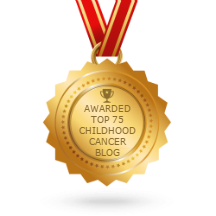Chemotherapy

Chemotherapy is the use of specific drugs, administered by a paediatric oncologist, to destroy cancer cells by preventing the cancer cells from growing and dividing to make more new cells. Cancer cells generally grow and divide much faster than healthy cells; chemotherapy destroys them more quickly than it destroys most healthy cells.
Chemotherapy drugs are very powerful and they cause damage to many growing cells, including some healthy cells. This damage causes the side effects of chemotherapy.
How Does Chemotherapy Work?
Chemotherapy is used in various ways, including:
- Before surgery or radiation therapy to shrink tumours – this is called neoadjuvant chemotherapy;
- After surgery or radiation therapy to kill any remaining cancer cells- this is called adjuvant chemotherapy;
- As the only treatment – e.g. to treat cancers of the blood or lymph system such as leukaemia and lymphoma;
- For cancer that returns after treatment – this is called recurrent cancer;
- For cancer that spreads to other parts of the body – this is called metastatic cancer
The Goals of Chemotherapy
The Chemotherapy goals will depend on the type of cancer and how far it has spread. Sometimes the chief goal is to get rid of all the cancer and prevent it from returning; when this is not possible, chemotherapy may be administered to delay or slow down cancer growth.
There are fewer symptoms caused by the cancer when chemotherapy is administered to delay or slow down cancer growth – this type of chemotherapy is also called palliative chemotherapy.
The Chemotherapy Plan
The chemotherapy plan will depend on the type of cancer being treated, and will be worked out by the paediatric oncologist – it may consist of a combination of drugs which often works better than just one drug on its own.
The chemotherapy drugs, dose, and treatment schedule will depend on various factors, including:
- Type of cancer
- Staging: This means the size and location of the cancer and whether it has spread or not.
- Age and general health
- Ability to cope with various side effects
- Any other medical conditions
- Previous cancer treatments
How Long Does Chemotherapy Take?
The duration of chemotherapy treatment depends on various factors; it could be given for a specified period of say 6 months or for as long as it works.
The side-effects of many of the traditional chemotherapy drugs are too severe for one to have chemotherapy treatment every day, so usually chemo will be given with breaks between sessions to give the patient time to rest and recuperate and allow the healthy cells to heal.
This is referred to as a “Treatment Cycle” and could consist of having a dose of chemotherapy then a 3 week break before the next treatment. Several cycles make up a course; a course of chemotherapy usually lasts 3 months or more.
Some cancers are treated with less recovery time between cycles; this is called a dose-dense schedule and can prove more effective against certain cancers, but it will also increase the risk for side-effects.
How Is Chemotherapy Administered?
Chemotherapy can be administered in various ways, and will depend on the type, staging and various other factors. The oncologist will decide the best method of delivery.
The various chemotherapy delivery methods include:
Intravenous (IV) Chemotherapy
Intravenous (IV) Chemotherapy is when the chemotherapy drugs are injected directly into a vein, and it takes between a few minutes and a few hours per session.
Some IV drugs work better over a period of days or weeks and can be administered via a small pump that is wither carried or worn – this is known as continuous infusion chemotherapy.
Oral Chemotherapy
Oral Chemotherapy is sometimes given via pill, capsule, or liquid – this is becoming more common as newer drugs are what is known as targeted therapies – this means that he medication can just be bought at the chemist and taken at home like any other medication.
Some oral chemotherapy drugs are taken daily and others may be given in cycles: daily for 4 weeks followed by a 2-week break before the next cycle begins.
Injected Chemotherapy
Injected Chemotherapy is when the chemotherapy drugs are administered via an injection into a muscle, the fatty part of an arm or leg, or the stomach.
Intra-Arterial Chemotherapy
Intra-Arterial Chemotherapy means that the drugs are injected into an artery that goes directly to the cancer.
Peritoneal or Abdominal Chemotherapy
Some chemotherapy is administered directly into the abdomen; especially in cancers that involve the peritoneum, which covers the surface of the inside of the abdomen and surrounds the intestines, liver, and stomach.
Topical Chemotherapy
Topical Chemotherapy is when the drugs are mixed into a cream that can be applied directly to the skin at the site of the cancer.
Side Effects of Chemotherapy
Due to the fact that very strong drugs are used during chemotherapy treatment, patients usually experience some Side-Effects.
Relieving side-effects, also known as palliative care, supportive care, or symptom management, is an important part of cancer care and treatment.
Relieving side effects is an important part of total cancer care and treatment, which is why you should discuss any symptoms your child is experiencing, new symptoms and changes in symptoms, with their Oncology Team so that they can work out a regimen of palliative or supportive care for them.
Disclaimer:
Please note that the Little Fighters Cancer Trust shares information regarding various types of cancer treatments on this blog merely for informational use. LFCT does not endorse or promote any specific cancer treatments – we believe that the public should be informed but that the option is theirs to take as to what treatments are to be used.
Always consult your medical practitioner prior to taking any other medication, natural or otherwise.














